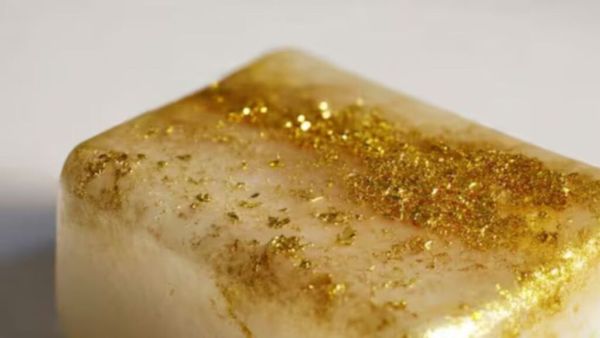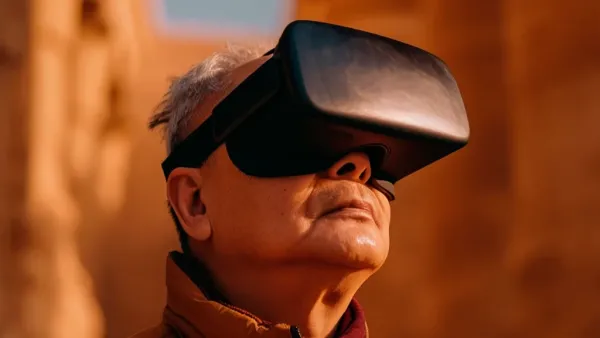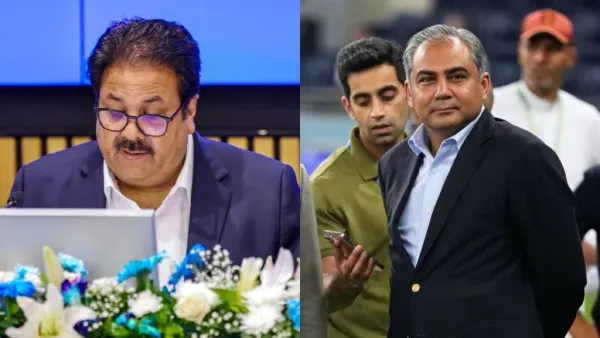Can a relationship between a powerful democracy and a proud one absorb daily surprises, constant barbs, selective memory and fantasy-laden promises? Donald Trump's team of provocateurs is starting to see the harm of public pressure versus gain from private conversations in India's case.
Trade adviser Peter Navarro has (thankfully) gone quiet, commerce secretary Howard Lutnick hasn't said much since threatening to 'fix' India, and treasury secretary Scott Bessent suddenly wants to enlist India's help to counter China's sweeping export controls on rare earth minerals. Reality check: if Beijing is pointing a 'bazooka at the supply chains', as Bessent said, Trump's tariff bazooka continues to be aimed at friends and allies.
Reports say Trump and Narendra Modi might meet next week in Malaysia to signal a degree of thaw. They have spoken twice in recent weeks - once to register birthday greetings and a second time to acknowledge the Gaza agreement. The ice is broken, but a trade deal remains necessary to ensure the thaw continues.
'It's a discussion in progress and there's progress in discussions' is how the Indian side described the latest round of trade talks. A US official agreed the talks were productive, but added that there was 'still some dancing around the issues'. While things can change quickly, it's not done until it's done.
The final decision rests with Trump. When and how he chooses to announce the deal may depend on the amount of political mileage he can extract, even though US goods exports stand to benefit from zero tariffs. He may not want to obscure the India deal with other announcements - or, shall we say, 'headlines' - while in Malaysia.
Sergio Gor, Trump's ebullient ambassador, had a protocol-shattering visit to India, although he hasn't yet taken up residence in Delhi or presented his credentials. He got unusually high-level access - he met the PM and every top official. Just as well that the foreign office is showing a new attitude for these new times. Of course, members of the 'protocol police' were outraged. For them, flexibility even in the national interest is haraam. But the old diplomatic book can't and doesn't work in a no-rules environment.
While Gor's visit was 'incredibly successful', there was a glitch. Whatever Indian officials conveyed to Gor on Russian oil purchases, whatever he reported back to Trump, and whatever the president understood, Trump's public declaration last week that Modi 'assured' him India would not be buying Russian oil any more caused a storm.
Here's a possible scenario: Indian officials probably said they would try to reduce the intake of Russian oil, which Gor might have read as meaning they were doing it, which might have led Trump to believe they had done it. The president pulls this manoeuvre all the time to create a fog of belief.
The point of an early high-level engagement with Trump's envoy is to show India wants the relationship to be defined by substance, not by The Daily Noise Chronicle. Delhi has shown it can stand its ground - something Trump officials are waking up to. The contrast with Pakistan's cartoonish sycophancy is noticeable to a few, if not all, who manage the India file in the administration.
Bessent's latest plea after Beijing bit back - that it was 'China versus the world' and not US versus China - was an admission of need for partners. He can see countries and companies are building strategies in the face of unpredictability. Last month, eight VC and PE firms from India and the US formed an unusual alliance to invest over $1 bn in India's deeptech startups over the next decade.
Another fact to consider: last week, oil prices came down to $58 a barrel - a five-month low. They may go down to $50, considering ramped-up production by Opec+ countries. Trump had first asked major oil producers to increase production in January as part of his strategy to pressure Russia. Saudi Arabia and the UAE finally began boosting production in August, and now fears of a glut in 2026 dominate as the fight for market share intensifies.
In this scenario, could India afford to mix it up a bit and give Trump an off- ramp? It seems like India already might have - oil imports from the US rose to 655,000 bpd in the first half of October, according to Kpler data, a jump of 448,000 bpd from September. US crude has higher shipment costs, longer travel times and suitability issues vis-a-vis Indian refineries, but a little give may win the day. Vladimir Putin will understand - China will buy whatever is left and store it for rainy days.
Trade adviser Peter Navarro has (thankfully) gone quiet, commerce secretary Howard Lutnick hasn't said much since threatening to 'fix' India, and treasury secretary Scott Bessent suddenly wants to enlist India's help to counter China's sweeping export controls on rare earth minerals. Reality check: if Beijing is pointing a 'bazooka at the supply chains', as Bessent said, Trump's tariff bazooka continues to be aimed at friends and allies.
Reports say Trump and Narendra Modi might meet next week in Malaysia to signal a degree of thaw. They have spoken twice in recent weeks - once to register birthday greetings and a second time to acknowledge the Gaza agreement. The ice is broken, but a trade deal remains necessary to ensure the thaw continues.
'It's a discussion in progress and there's progress in discussions' is how the Indian side described the latest round of trade talks. A US official agreed the talks were productive, but added that there was 'still some dancing around the issues'. While things can change quickly, it's not done until it's done.
The final decision rests with Trump. When and how he chooses to announce the deal may depend on the amount of political mileage he can extract, even though US goods exports stand to benefit from zero tariffs. He may not want to obscure the India deal with other announcements - or, shall we say, 'headlines' - while in Malaysia.
Sergio Gor, Trump's ebullient ambassador, had a protocol-shattering visit to India, although he hasn't yet taken up residence in Delhi or presented his credentials. He got unusually high-level access - he met the PM and every top official. Just as well that the foreign office is showing a new attitude for these new times. Of course, members of the 'protocol police' were outraged. For them, flexibility even in the national interest is haraam. But the old diplomatic book can't and doesn't work in a no-rules environment.
While Gor's visit was 'incredibly successful', there was a glitch. Whatever Indian officials conveyed to Gor on Russian oil purchases, whatever he reported back to Trump, and whatever the president understood, Trump's public declaration last week that Modi 'assured' him India would not be buying Russian oil any more caused a storm.
Here's a possible scenario: Indian officials probably said they would try to reduce the intake of Russian oil, which Gor might have read as meaning they were doing it, which might have led Trump to believe they had done it. The president pulls this manoeuvre all the time to create a fog of belief.
The point of an early high-level engagement with Trump's envoy is to show India wants the relationship to be defined by substance, not by The Daily Noise Chronicle. Delhi has shown it can stand its ground - something Trump officials are waking up to. The contrast with Pakistan's cartoonish sycophancy is noticeable to a few, if not all, who manage the India file in the administration.
Bessent's latest plea after Beijing bit back - that it was 'China versus the world' and not US versus China - was an admission of need for partners. He can see countries and companies are building strategies in the face of unpredictability. Last month, eight VC and PE firms from India and the US formed an unusual alliance to invest over $1 bn in India's deeptech startups over the next decade.
Another fact to consider: last week, oil prices came down to $58 a barrel - a five-month low. They may go down to $50, considering ramped-up production by Opec+ countries. Trump had first asked major oil producers to increase production in January as part of his strategy to pressure Russia. Saudi Arabia and the UAE finally began boosting production in August, and now fears of a glut in 2026 dominate as the fight for market share intensifies.
In this scenario, could India afford to mix it up a bit and give Trump an off- ramp? It seems like India already might have - oil imports from the US rose to 655,000 bpd in the first half of October, according to Kpler data, a jump of 448,000 bpd from September. US crude has higher shipment costs, longer travel times and suitability issues vis-a-vis Indian refineries, but a little give may win the day. Vladimir Putin will understand - China will buy whatever is left and store it for rainy days.
(Disclaimer: The opinions expressed in this column are that of the writer. The facts and opinions expressed here do not reflect the views of www.economictimes.com.)









Seema Sirohi
Senior journalist who writes on foreign policy and India's place in the world.